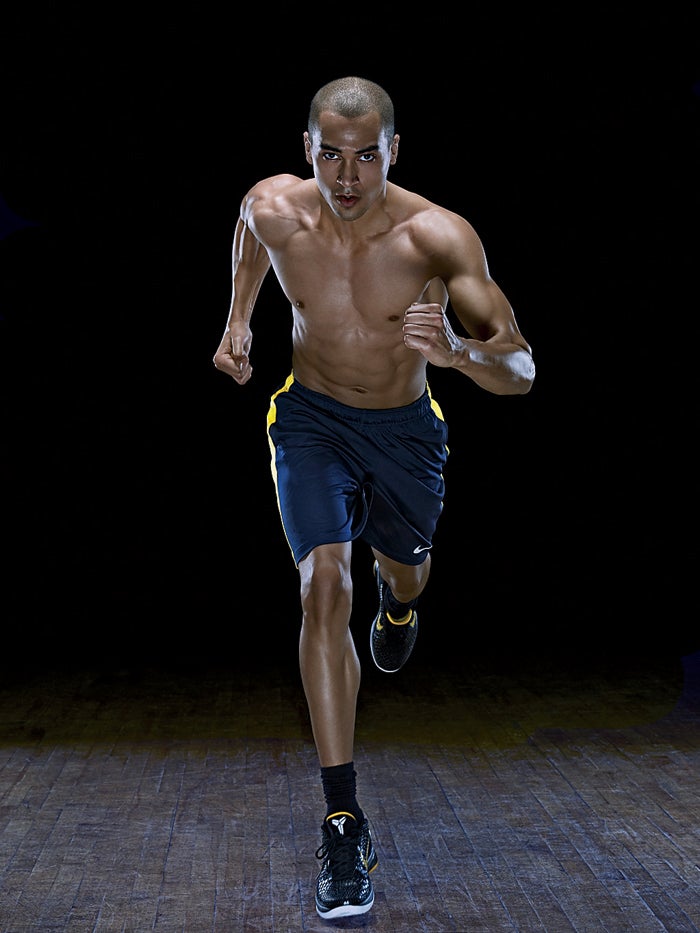Will Recla joined the cross-country team at Lindbergh high school, in Renton, Washington, in the fall of 2012. On October 3, Recla, one of the most talented freshmen on the squad, underwent a high-tech heart screening through an organization called the . The recommends a for athletes, and most high school and college students must pass to play sports. But, as a teenager, the athletic director at ReclaŌĆÖs school had witnessed a friend collapse and die suddenly, and he wanted all incoming athletes to undergo an electrocardiogram (ECG) and echocardiogram.
Recla didnŌĆÖt have a family history of heart disease, and he hadnŌĆÖt experienced symptoms associated with heart disorders: no fainting, weakness, or irregular rhythm during exercise. Nor had a routine exam uncovered anything unusual. So the call from Nick of TimeŌĆÖs medical director, a few hours after the test, came as a shock. There was something wrong with ReclaŌĆÖs heart, the doctor said, and he needed to see a cardiologist immediately. Recla soon learned that his aortic valve was stretched and malfunctioning, which put him in danger of a catastrophic cardiac hemorrhage during intense exercise. Within three months, he underwent major heart surgery that replaced his valve with one from a pig, and by February 2013 he was running again. ŌĆ£Nick of Time saved WillŌĆÖs life,ŌĆØ says Mary Recla, WillŌĆÖs mother. ŌĆ£I think everyone should be screened.ŌĆØ
Others disagree. ŌĆ£ItŌĆÖs an emotional topic,ŌĆØ says , lead author of the Heart AssociationŌĆÖs new screening guidelines. ŌĆ£ŌĆśIf you can save one life, why not do it?ŌĆÖŌĆØ The answer, Maron believes, is that the drawbacks of screening large numbers of people outweigh the small chance that an otherwise healthy athlete will die during a practice or competition. Advanced screenings are costly, have a high rate of false positives, and can lead to invasiveŌĆöand riskyŌĆöprocedures. ŌĆ£Screening large populations is a complex public-health problem,ŌĆØ says Maron. ŌĆ£ItŌĆÖs deceptively complicated.ŌĆØ
In recent years, the governing bodies of major endurance sports have been unable to agree on a standard practice. Last year, the World Rowing Federation joined the International Cycling Union in requiring yearly ECGs for competitors. But the ŌĆöwhich has witnessed several high-profile deaths during competitions and seen multiple world-champion racers suffer from dangerous conditionsŌĆöhas no such requirement. In the States, USA Triathlon suggests only that athletes discuss heart health with a doctor; has no official policy at all. While the debate continues, there are a growing number of organizations, including the , the , and , offering cardiac screening to athletes.
[quote]Receiving a clean bill of health involved several nerve-racking weeks and wasnŌĆÖt cheapŌĆöa single echocardiogram can run more than $2,000.[/quote]
Exercise makes your heart healthier, but while youŌĆÖre doing it your chances of having a heart attack go up dramatically. Young athletes are more likely to have undiagnosed arrhythmias and disorders like hypertrophic cardiomyopathy, a thickening of the heart muscle, than endurance athletes above 35, who are at higher risk of dying from coronary artery disease. Either way, for athletes with serious disorders, the first symptoms may surface while out for a run or ride. And in many cases, the first symptom is an arrest.
Whether an athlete gets screened often turns out be a personal decision. During my senior year of college, I had trouble getting a full breath while running. A few months earlier, a close friend had collapsed and died while playing soccer, so I quickly made an appointment to see my doctor. She heard a murmur and recommended that I see a cardiologist. Eventually, I underwent a slate of tests similar to those performed on Recla.
All the tests came back negative, and IŌĆÖve run without incident ever since. While the murmur justified the testing and the process ultimately put my mind at ease, it was essentially a false positive. Receiving a clean bill of health involved several nerve-racking weeks and wasnŌĆÖt cheapŌĆöa single echocardiogram can run more than $2,000.
In other words, once youŌĆÖre in the cardio-diagnostic system, it can be difficult to escape. ŌĆ£What happens is that you find things that look dangerous but are not,ŌĆØ says , a cardiologist at Hartford Hospital who helped draft the American Heart AssociationŌĆÖs screening guidelines. False positives result from as many as 10 percent of ECG screens, prompting more tests and sometimes requiring athletes to halt exercise altogether.

Even identifying actual disorders can have mixed results. ŌĆ£Take hypertrophic cardiomyopathy,ŌĆØ Thompson says. ŌĆ£One in 500 people have it, but not one in 500 people die. WhatŌĆÖs the hassle? Well, we have trouble ignoring it.ŌĆØ Once doctors find abnormalities, potentially benign or otherwise, theyŌĆÖre obligated to perform additional tests and proceduresŌĆöcauterizing a section of heart tissue to control an arrhythmia, say, or implanting a defibrillatorŌĆöthat carry their own risks. Many of these patients would never have experienced cardiac distress. ŌĆ£ThatŌĆÖs very hard for people to accept,ŌĆØ Thompson says. ŌĆ£You end up making more problems rather than saving lives.ŌĆØ
Still, testing does save lives. In the eighties, Italy began requiring all athletes, regardless of age, to undergo a pre-participation screening that includes an ECG. In the decade following the mandate, the rate of sudden cardiac death declined by nearly ŌĆ©90 percent, down to one in 250,000. ItalyŌĆÖs results are why , a physician for the University of WashingtonŌĆÖs athletic department, is among those advocating for more ECG testing. ŌĆ£If weŌĆÖre going to screen, we should do a screen thatŌĆÖs effective,ŌĆØ Harmon says.
While cardiac events are the most common factor in athlete mortality, nearly all doctors agree that the total number of deaths in endurance sports is relatively small. ŌĆ£There are a lot bigger public-health issues,ŌĆØ says , a physician at the University of Minnesota, who has studied sudden cardiac death in athletes. Nationally, Roberts estimates that fewer than five runners die during marathons or half marathons each year. ŌĆ£WhatŌĆÖs special about athletes that they deserve heightened screening?ŌĆØ
Perhaps nothing, which is why physicians like Harmon recommend more specific guidelines. They advocate for heightened ECG screening for young basketball players and cross-country runners, two of the most at-risk youth groups according to , and encourage adult athletes to monitor their risk profile. ŌĆ£Men have more heart attacks than women,ŌĆØ says Harmon. ŌĆ£Then you start to look at things like family history. Do you have a relative who had a heart attack before the age of 40? WhatŌĆÖs your cholesterol? Have you had chest pain? And the ŌĆ©one thatŌĆÖs most concerning is passing out while exercising.ŌĆØ
Recla, of course, had no symptoms before he was screened, but itŌĆÖs hard to argue that he shouldnŌĆÖt have been. ŌĆ£ThereŌĆÖs no drama to his story because heŌĆÖs fine,ŌĆØ Mary Recla says. ŌĆ£But you hear about people dying. We wouldŌĆÖve had no idea.ŌĆØ
Know Your Odds
Your susceptibility to heart disease is called your risk profile, which is determined by a host of factors including age, race, weight, family history, and diet. Among athletes, different sports carry different risks. For endurance athletes over 35, especially men, the big danger is coronary artery disease. Some researchers think that triathletes with cardiac abnormalities are more likely than other athletes to die from a cardiac episode, perhaps because cold water can trigger symptoms. Long-distance cross-country skiers have above-average rates of atrial fibrillation and bradyarrhythmias, and the most common causes of death for marathoners while running are hypertrophic cardio-myopathy and coronary artery disease.
Pump Primer
At a minimum, young athletes should take the American Heart AssociationŌĆÖs recommended screening. Athletes at high risk for heart disease should ŌĆ©consider advanced testing. HereŌĆÖs what each option looks like.
Heart Association Screening
A 14-point evaluation for high school and college athletes that involves a series of questions about family history and symptoms of heart disordersŌĆöfatigue, fainting, or chest pain during exercise. It also includes a physical exam: a doctor will listen for a heart murmur, check for femoral-artery narrowing, measure blood pressure, and assess for , which is associated with hypertrophic cardiomyopathyŌĆöa thickening of the heart muscleŌĆöand other anatomical disorders. The full guidelines are at .
Advanced Testing
- An , or ECG, monitors the heartŌĆÖs electrical signals for abnormal rhythms. ItŌĆÖs used to detect disorders like hypertrophic cardiomyopathy and long QT syndrome.
- use sound waves to diagram the heart, similar to how ultrasounds visualize a fetus. ItŌĆÖs the best test for diagnosing structural heart disorders, such as aortic-valve enlargements, but itŌĆÖs also useful for confirming suspected hypertrophic cardiomyopathy.
- In a , a patient is hooked up to an ECG and a blood-pressure monitor while on a treadmill. It provides a look at the heart during exercise and is commonly used to diagnose coronary artery disease.


